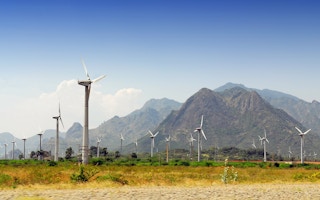With 32 parties of the United Nations Framework Convention on Climate Change (UNFCCC) and now the US recently submitting their Intended Nationally Determined Contribution (INDC’s) reports, India’s climate proposal awaits with much anticipation. India is rapidly emerging to be among the top carbon emitting states of the world.
To continue reading, subscribe to Eco‑Business.
There's something for everyone. We offer a range of subscription plans.
- Access our stories and receive our Insights Weekly newsletter with the free EB Member plan.
- Unlock unlimited access to our content and archive with EB Circle.
- Publish your content with EB Premium.
While in the past, the state has vehemently stuck to its guns on principle of historical responsibility, there seems to be a shift in India’s posture on climate change. Recently, Prime Minister Narendra Modi signalled for a greater focus on climate change whilst placed the issue at the same pedestal as terrorism. With this dichotomy, what are India’s takeaways from the reports submitted to the UNFCCC already? And, where do we go from here?
Fresh Impressions
Last December, over 190 negotiators agreed to propose national pledges in writing to cut global carbon emissions prior to the UN climate talks in Paris this year. The objective was to pave a new way to combat climate change, empower all states to prevent the average global temperature from rising above 2 degrees Celsius while striving for sustainable development in the wake of a greener economy.
In the last round of talks, the US committed to an insignificant cut (26-28 per cent by 2025) while China trumpeted its desire to peak till 2030. Being the world’s largest carbon emitting states and refusing to budge from the craftiness of their stipulated policies and ideologies, India, on the other hand, seems to be more level-headed than before about its climate control tactics. However, India has been clear that since its per-capita emissions are low; it will not announce a peaking year but rather focus attention towards its adaptation policies and increase the size of renewable energy in the state.
The declarations submitted by the US, EU etc are indeed a vital step but still fall short of the overall primary objective to combating climate change and observing the global temperature under 2 degree Celsius. Currently, India is in the midst of formulating effectual climate policies by way of increasing internal implementations and reduce the dependency on external reinforcements.
It is seeking to invest in solid waste management and exploit the nuclear energy front for environmental protection, thus, ensuring revenue generation in the purview of development. Despite facing immense pressure from industrialised economies, India has maintained a strong foothold by way of not slipping into reactive modes and choosing to respond through behavioural norms and practices.
Although, India may have initially tread on the China path and administered its climate contributions, policies in accordance to its neighbour, it tends to draw away from alignments when it foresees its interests being compromised.
The way ahead
“
The problem is that with developing states such as India, a clear, proactive developmental plan is absent. With developed states now urging India to forgo its right to development and pursue stringent mitigation alternatives, India’s efforts should focus on showcasing its developmental policy vis-à-vis climate control endeavours.
Despite diverging positions and a history of limited success achieved through high panel group discussions held in the past, the Paris summit does pin a high hope for policy makers and environmental advocates to reach an attainable solution. The major downfall of the Copenhagen in 2009 was establishing clear guidelines to assess progresses and failures in the climate regime building process. The fact that states are not obstinate to budging from their predetermined agendas and conceived notions even before the meeting commences, marks significant progress in the current line up of affairs.
The climate talks, likely scheduled in Paris this December, have induced much speculation regarding the future scenario of climate change and fructification of a universally binding agreement between the Annex I and Non-Annex I parties to the UNFCCC. The states that have submitted pledges so far account to about one-third of the annual global carbon emissions from energy consumption already.
Once the remaining INDCs are submitted and a concluding report is drawn, the UNFCCC should enforce useful facilitation measures to promote success and assist in lessoning the risk for failure in the climate talks this year.
The problem is that with developing states such as India, a clear, proactive developmental plan is absent. With developed states now urging India to forgo its right to development and pursue stringent mitigation alternatives, India’s efforts should focus on showcasing its developmental policy vis-à-vis climate control endeavours.
This can be achieved through adopting the measures proposed in the 12th plan such as promoting solar and wind energy, enhancing energy efficiency, etc. By doing so, India reaps two benefits for the price of one. On the domestic front, it continues to augment development-targeted schemes whilst in the international community it pursues an endeavour to speedily enhance climate mitigation and adaptation processes.
India’s carbon footprint in future years will be less than a fraction of that of the major carbon-polluting states. In its impending report, India may not be willing to identify a high percentile to jot its emission rate nor will it cling to a peaking policy as China, but, in whole, it will target a certain reduction that should effectively seek to utilise its carbon space. India will continue to display its emissions as developmental emissions and not lifestyle emissions.
However, it is time for India to now play a leading actor in the mission towards climate control and carbon reduction whereby continuing to be firm where necessary and accommodate deliberations where required.
Roomana Hukil is a Program Officer at the Australia India Institute @ Delhi. This post was written exclusively for Eco-Business.











